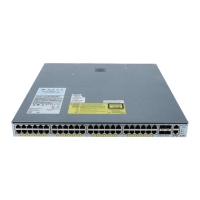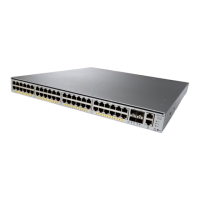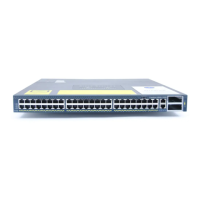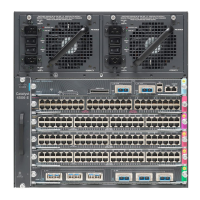214 Cisco LAN Switching Configuration Handbook
Table 12-4 Switch Commands to Display Power Management Information
Display Function Command
System power
(exec) show power
Module power state
(exec) show power status all
Displaying Information About Power Management
Table 12-4 lists some switch commands that you can use to display helpful information
about power management.
12-5: Environmental Monitoring
A switch command that you can use to display helpful information about environmental
monitoring is as follows:
(exec) show environment temperature
The output from the show environment temperature command lists the temperatures
measured at the intake and exhaust of each module, with the warning and critical alarm
temperatures in parentheses. To operate normally, a switch temperature should not
exceed the levels shown within the parentheses.
“Device 1” and “Device 2” temperatures refer to additional sensors within the modules.
“VTT” modules are located on the chassis backplane.
12-6: Packet Tracing
■ The ping (Packet Internet Groper) command tests end-to-end connectivity from a
switch to a remote host. The IP ping uses ICMP type 8 requests and ICMP type 0
replies.
■ The traceroute or Layer 3 traceroute command discovers the routers along the path
that packets take to a destination. An IP traceroute uses UDP probe packets on port
33434.
■ The l2trace or Layer 2 traceroute command discovers the physical path that a packet
takes through a switched network.
■ l2trace looks up the destination in the forwarding table and then contacts the next
neighboring switch via CDP. Each switch hop is queried in a similar fashion.

